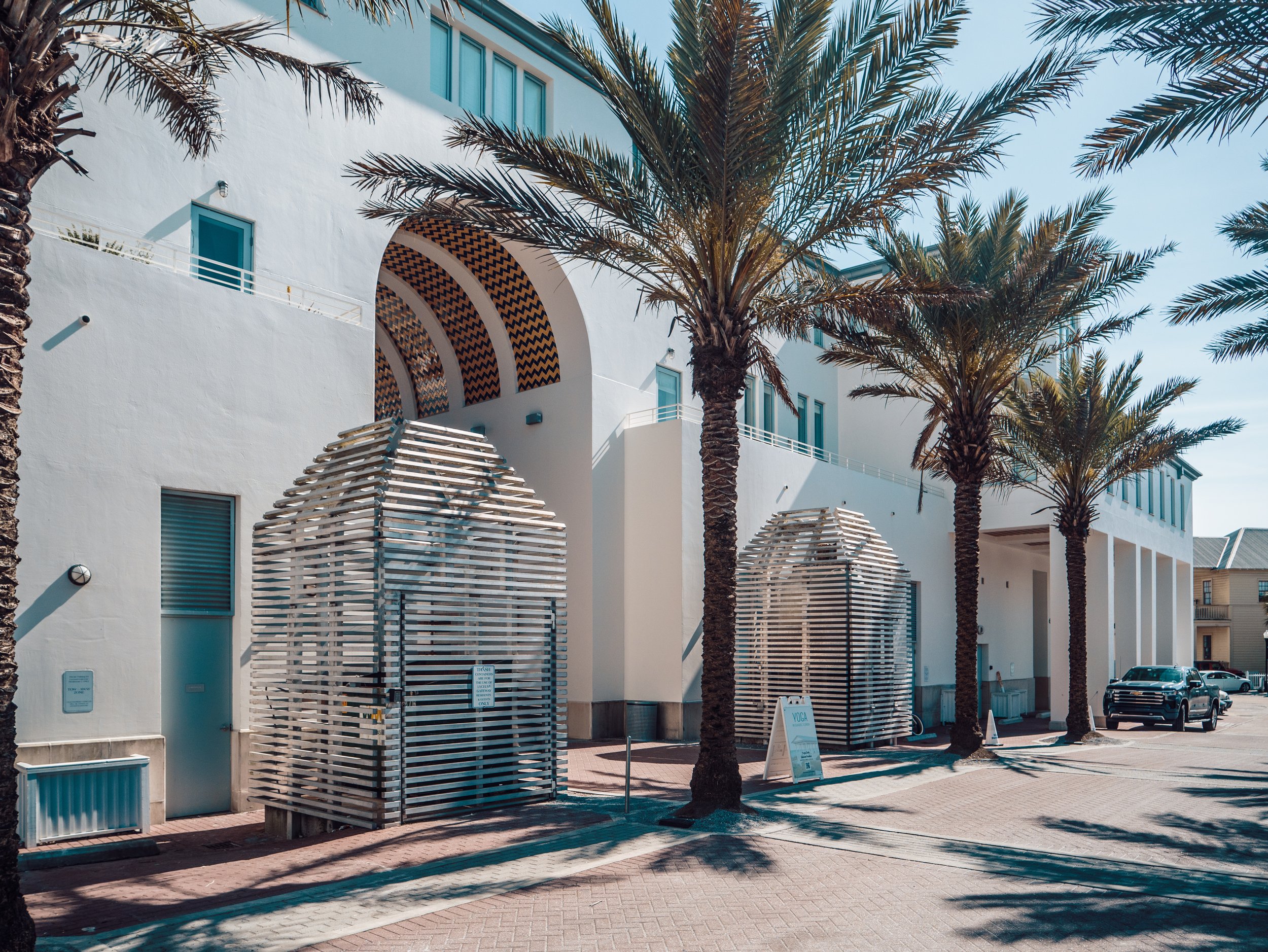Seaside, Florida, is one of the most iconic examples of new urbanism, a movement that aims to revive traditional town planning principles in modern developments.
Founded in the early 1980s by developer Robert Davis and designed by architects Andrés Duany and Elizabeth Plater-Zyberk, Seaside was conceived as a response to the sprawling, car-centric suburban developments that dominated much of the United States. Instead, Seaside embraced a return to human-scale, walkable neighborhoods, combining beauty, functionality, and community in a way that has inspired developments around the world.
The layout of Seaside was meticulously planned to foster a strong sense of place and community. Streets are narrow and pedestrian-friendly, lined with charming homes and public spaces. The town center, with its shops, restaurants, and public squares, is within walking distance of all residences, encouraging residents and visitors to leave their cars behind and engage with the town’s vibrant, shared spaces. This walkability is a core element of Seaside’s design, making it easy for people to interact with their neighbors and enjoy the town’s amenities without needing to drive.
Architecturally, Seaside is renowned for its adherence to traditional styles that reflect the charm of small coastal towns. Houses are built in a variety of styles, including Southern vernacular, Victorian, and classical, all united by a cohesive design code that ensures harmony and aesthetic consistency throughout the town. The buildings are designed to be functional and beautiful, with features like porches and balconies that encourage outdoor living and connection with the surrounding environment.
One of Seaside’s key successes is its emphasis on creating public spaces that invite people to gather and socialize. The town square is a central hub for community life, surrounded by shops, restaurants, and a picturesque pavilion overlooking the Gulf of Mexico. The beachfront amphitheater is another signature space, offering a venue for performances, events, and gatherings, reinforcing Seaside’s role as a place for people to come together.
Sustainability is also a significant focus in Seaside’s design. By creating a compact, walkable environment, the town reduces reliance on cars, promoting healthier, more environmentally friendly ways of living. The architecture itself also reflects a sensitivity to the local climate, with homes designed to maximize natural ventilation and shading, reducing the need for artificial cooling in the hot Florida sun.
Seaside has not only been a success in its own right but has also had a profound influence on urban development globally. It helped to spark the new urbanism movement, inspiring many other communities to return to the principles of traditional town planning. Seaside demonstrated that walkable, community-focused neighborhoods can be both beautiful and functional, offering a desirable alternative to the sprawling, car-dependent suburbs that had come to dominate much of the American landscape.
Today, Seaside is celebrated as a model for how new developments can prioritize human interaction, sustainability, and timeless design. Its success shows that by looking to the past and applying traditional urban principles in a modern context, we can create places that are not only livable but also deeply cherished by those who call them home.



